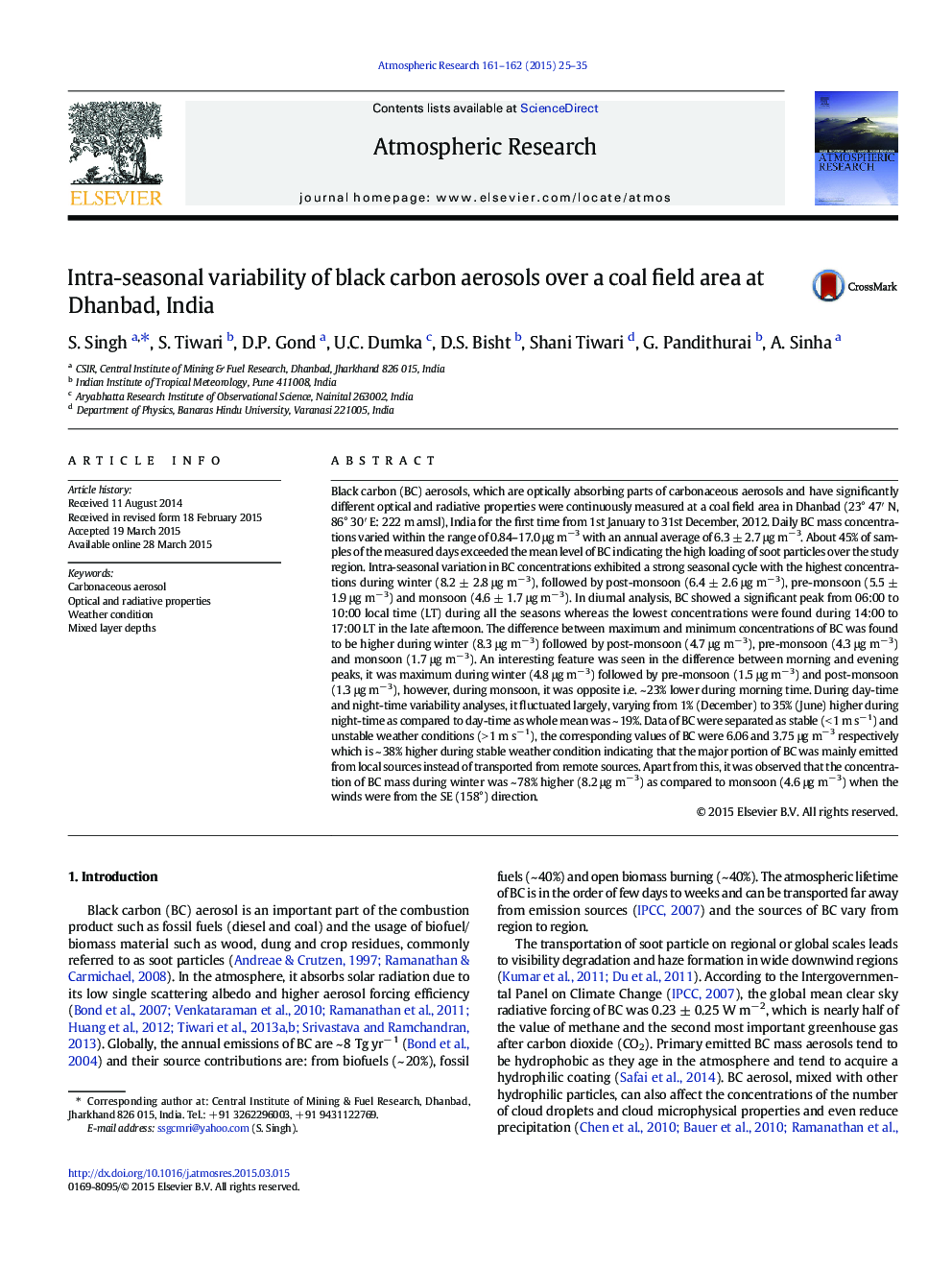| کد مقاله | کد نشریه | سال انتشار | مقاله انگلیسی | نسخه تمام متن |
|---|---|---|---|---|
| 4449661 | 1620513 | 2015 | 11 صفحه PDF | دانلود رایگان |
• First time a year-long measurement of black carbon aerosols over coal field area
• BC concentrations over Dhanbad were higher during winter due to meteorological impact as well as local emissions.
• Local man-made emissions are major sources of black carbon.
• BC mass concentrations showed a peak during early morning hours.
Black carbon (BC) aerosols, which are optically absorbing parts of carbonaceous aerosols and have significantly different optical and radiative properties were continuously measured at a coal field area in Dhanbad (23° 47′ N, 86° 30′ E: 222 m amsl), India for the first time from 1st January to 31st December, 2012. Daily BC mass concentrations varied within the range of 0.84–17.0 μg m− 3 with an annual average of 6.3 ± 2.7 μg m− 3. About 45% of samples of the measured days exceeded the mean level of BC indicating the high loading of soot particles over the study region. Intra-seasonal variation in BC concentrations exhibited a strong seasonal cycle with the highest concentrations during winter (8.2 ± 2.8 μg m− 3), followed by post-monsoon (6.4 ± 2.6 μg m− 3), pre-monsoon (5.5 ± 1.9 μg m− 3) and monsoon (4.6 ± 1.7 μg m− 3). In diurnal analysis, BC showed a significant peak from 06:00 to 10:00 local time (LT) during all the seasons whereas the lowest concentrations were found during 14:00 to 17:00 LT in the late afternoon. The difference between maximum and minimum concentrations of BC was found to be higher during winter (8.3 μg m− 3) followed by post-monsoon (4.7 μg m− 3), pre-monsoon (4.3 μg m− 3) and monsoon (1.7 μg m− 3). An interesting feature was seen in the difference between morning and evening peaks, it was maximum during winter (4.8 μg m− 3) followed by pre-monsoon (1.5 μg m− 3) and post-monsoon (1.3 μg m− 3), however, during monsoon, it was opposite i.e. ~ 23% lower during morning time. During day-time and night-time variability analyses, it fluctuated largely, varying from 1% (December) to 35% (June) higher during night-time as compared to day-time as whole mean was ~ 19%. Data of BC were separated as stable (< 1 m s− 1) and unstable weather conditions (> 1 m s− 1), the corresponding values of BC were 6.06 and 3.75 μg m− 3 respectively which is ~ 38% higher during stable weather condition indicating that the major portion of BC was mainly emitted from local sources instead of transported from remote sources. Apart from this, it was observed that the concentration of BC mass during winter was ~ 78% higher (8.2 μg m− 3) as compared to monsoon (4.6 μg m− 3) when the winds were from the SE (158°) direction.
Journal: Atmospheric Research - Volumes 161–162, 1 July–1 August 2015, Pages 25–35
